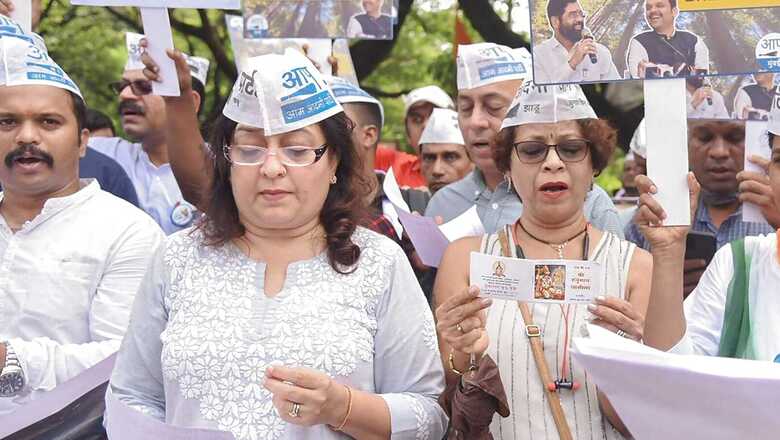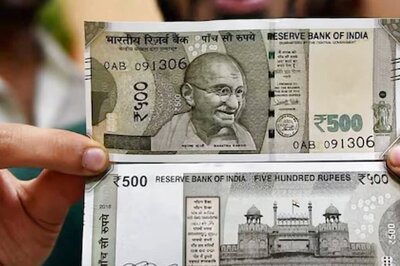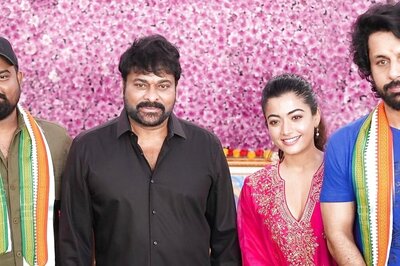
views
• 760 commuters died in 6 months in Mumbai on local train tracks as per a Hindustan Times report dated July 28, 2021. According to the data compiled by the Mumbai’s Railway Police Commissionerate in 2019, as many as 2,691 died and 3,198 injured on the suburban network, as reported by Deccan Herald dated March 10, 2020.
• Mumbai local trains carry 36 lakh passengers daily (The Indian Express, dated March 19, 2022). It used to carry 75 lakh per day in 2017 as per HT dated Sep 30, 2017, 2.6 times their rated capacity.
• A single 12-car train on Mumbai’s suburban railway network has the capacity to carry 1,174 passengers. But it carries close to 6,000 passengers in one go. On an average, overcrowding caused seven-eight deaths every single day on the suburban railway network, Mirrornow dated January 24, 2019.
• Mumbai’s own overcrowded municipal buses (BEST) carry 23 lakh passengers daily as per Times of India dated 9-11-2020.
• Mumbai’s vehicle density of Mumbai 1,900 per km vs 113 per km in Maharashtra. With same road length, the density has increased by 35% in last 5 years, according to the Times of India report dated March 6, 2020. Vehicle density of Delhi is 108 per km, just to make a fair comparison. Delhi has 32.5 lakh vehicles as compared to 10.7 lakh of Mumbai.
Having set the context, I can confidently say that Mumbai has the worst roads as compared to any other city in India under this same Shiv Sena-led Brihanmumbai Municipal Corporation (BMC), resulting in damaged vehicles, excess carbon emission due to snarling traffic. Except Eastern Express Highway and Eastern Freeway, I can challenge anyone to show me any clean stretch of more than 2 km in Mumbai.
This has seen all the people who can afford gas guzzling SUVs, including all our Netas including from the Shiv Sena. These leaders are leading ‘Save Aarey’ campaign built on wrong premises.
One embarrassingly poorly constructed metro line by Anil Ambani’s group has improved commuting amazingly between the eastern suburb of Ghatkopar to the western suburb of Versova. It has reduced the traffic on Andheri Kurla road visibly.
All the efforts to make commuting easier in Mumbai have been incremental thus making practically no difference to the lives of the poor Mumbaikar. One major one-time effort was the construction of 55 flyovers under the stewardship of Nitin Gadkari that eased lives on roads for at least 30 years.
Mumbai is decaying and crumbling – I can say this as I was born and brought up in the city. Mumbai, which has been contributing the biggest share in tax kitty since decades, has been milked by the Centre and state governments. It always got cold shoulder. Mumbai is not a linear city anymore, every possible corner has been taken over by rising population, thus old local trains don’t suffice anymore. There is lot of East-West traffic too, not just North-South.
Then came along Devendra Fadnavis. He decided to change all of this in one massive swoop. Ideas such as the trans-harbour link, hanging fire for nearly three decades, Versova-Colaba coastal road and six metro lines got wings. It meant a huge disturbance for Mumbaikars. Every Mumbaikar bore the pain looking forward to ease of living. It is the most ambitious project ever for Mumbai.
Mumbai has hardly any big real estate left, most of it is either having been sold off by greedy politicians with “change of use” to their friends or their own benami companies. Thus, finding space for metro train yards was a challenge for any urban planner. Of all the metro lines, the most critical and ambitious project was the MIDC (Andheri) to Colaba (South Mumbai) that is 100% underground. But the yard had to be over ground and, naturally, near the terminal station at MIDC. After much deliberation, Aarey Colony was chosen that is only 2% of the entire Aarey land.
Aarey is not or was not a protected forest. It was reserved as a grazing land and had its own tribal villages inside it. Aarey Dairy project had been shut down due to various reasons, including vested interests. It had 1,100 acres of land. Royal Palms, built breaking all the rules of reserved area, occupies 97 hectares. It is definitely due to political cronyism. The 219 acres of land had been gifted for Film City. Still it has an area that is huge by Mumbai standards, but much smaller than the reserved national park, called Sanjay Gandhi National Park.
According to a report in The Hindu dated June 9, 2017, the RITES Engineering Consultancy indicated that nearly 2,800 trees, which are affected by the Metro 3 project reduce carbon dioxide emissions by 61 metric tonnes annually, while the Metro 3 would reduce emissions by 9,907 metric tonnes every year. The Metro 3 (that needs Aarey car shed) will also save 2.43 lakh litres of petrol by 2021, saving the city almost Rs 2 crores a day in fuel cost. It will also reduce the crowd on the mainland railways by 25%. According to the same RITES report, Metro lines will take less than 80 days of Carbon sequestration that 2,702 trees would do in 20 years that are to be cut down because of Metro shed. We are not even talking about new tree plantation or transplantation here.
Every delay in completion of the project means hundreds of crores in rising costs due to inflation and more misery for the commuters. But there were some professional club class environmentalists who tried to stall the Aarey car shed. Misguided environmentalists went to courts where they lost the case. But they kept trying to stall the project. For steadfast and firm former chief minister Devendra Fadnavis, this project would have got buried in time and delayed forever.
Unfortunately, Shiv Sena ditched the re-elected government and young Thackeray offspring, basking in the company of club class focused on increasing pub timings and stopping the Aarey metro shed, without offering any viable alternative and delaying the project and raising the cost. The place chosen, Kanjurmarg, is impractical, nearly 7-8 km away, where another car shed of another metro line had been planned. It is also a protected part marshy land and part saltpan land, more fragile than the Aarey land.
The project is crawling at a painful speed during the 2.5 years of Maha Vikas Aghadi (MVA) rule. However, the club class environmentalists are least bothered as it is their fetish. Children are being misguided and fed wrong information. They have been brought out to support this misguided idea.
No average Mumbaikar, who has used local trains can deny the huge utility but unimaginably painful rides, will ever oppose these metros even if there was no effect on overall carbon footprint for Mumbai. I suggest that every Aarey car shed protestor should forego cars for a week and use public transport. They must travel by train at least 3 out of 5 days during peak hours and then go to Aarey to protest against it. I can safely bet that they find themselves lying on their beds with warm water bags and pain killers or drinks. I can assure you this is the best way to educate them on real pains of an average Mumbaikar and seek their forgiveness for trying to stop this project.
The writer is a well-known author and columnist. He has written seven books on RSS and done a Ph.D. on RSS. The views expressed in this article are those of the author and do not represent the stand of this publication.
Read all the Latest News, Breaking News, watch Top Videos and Live TV here.




















Comments
0 comment